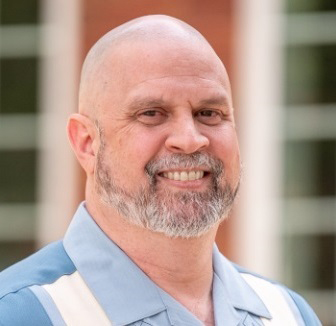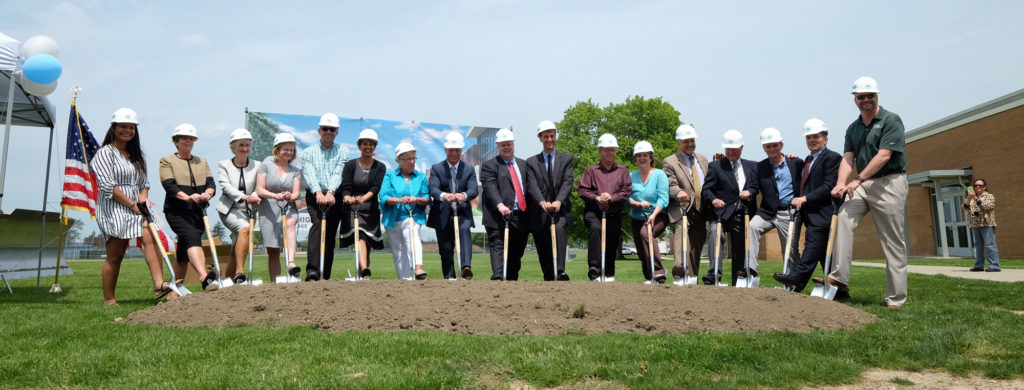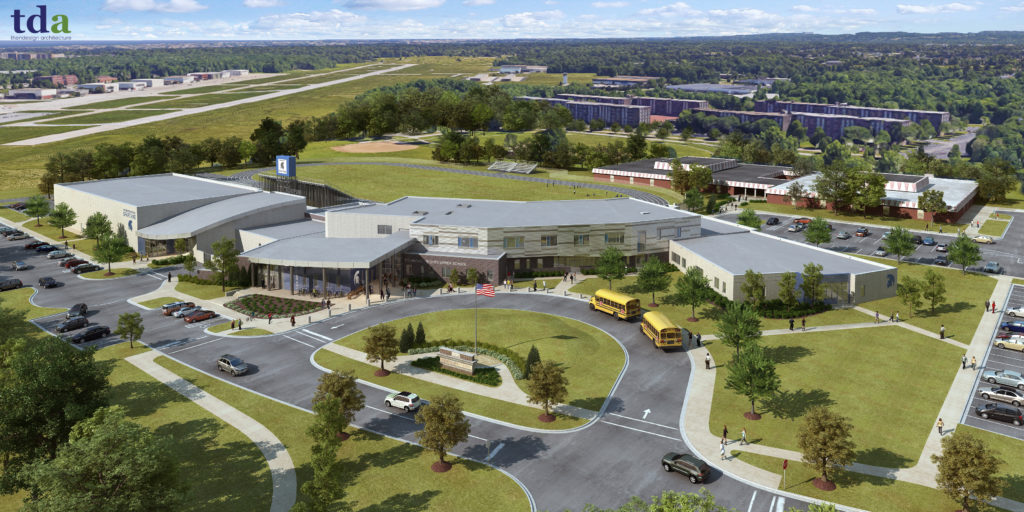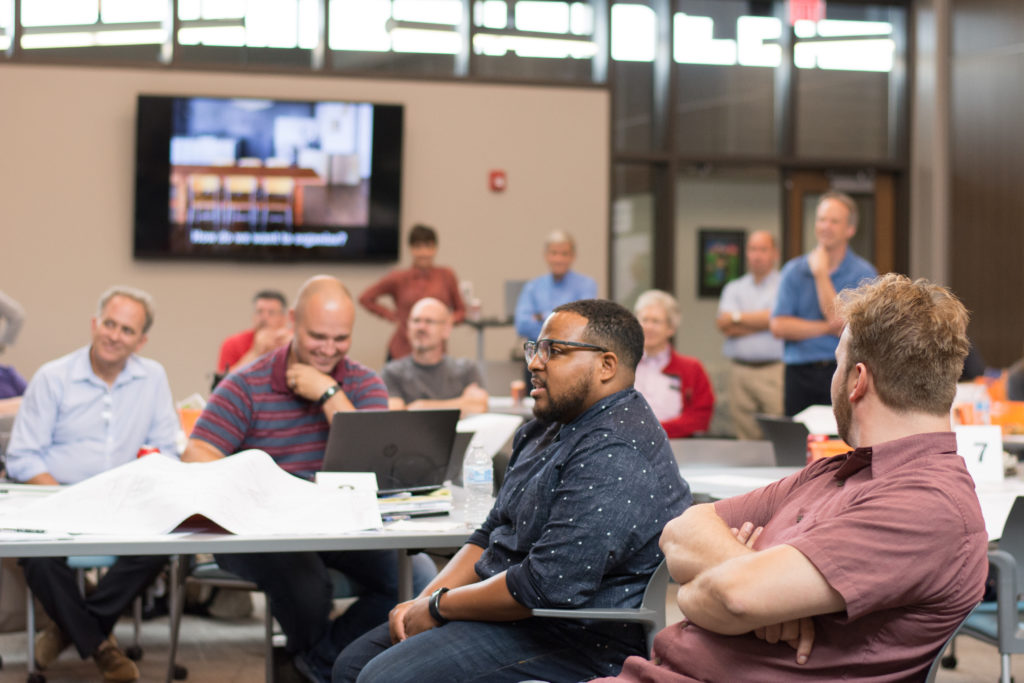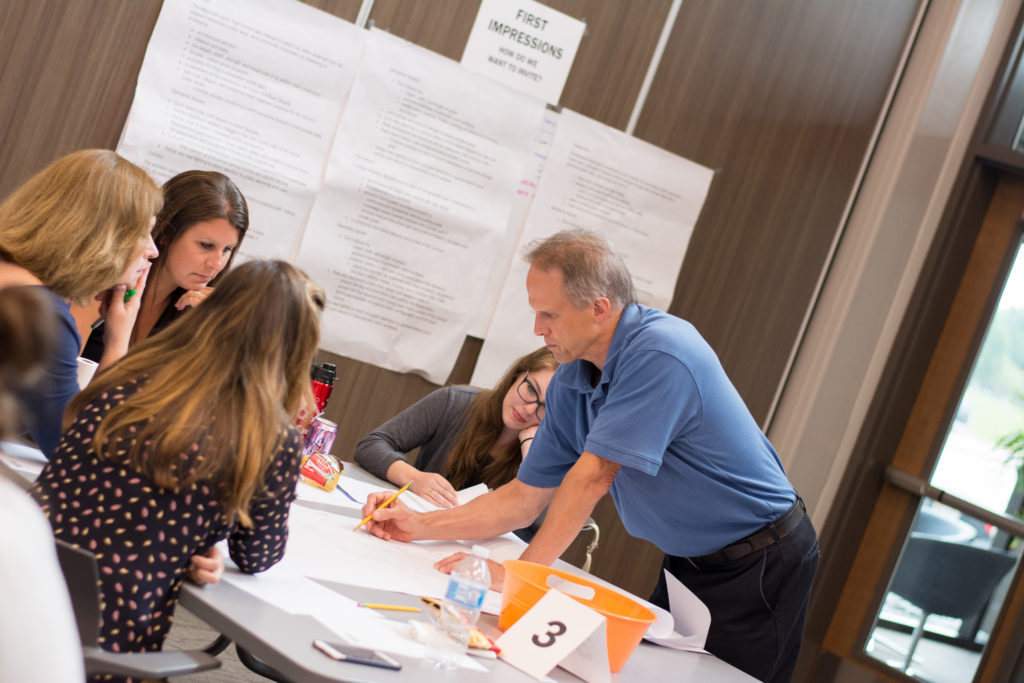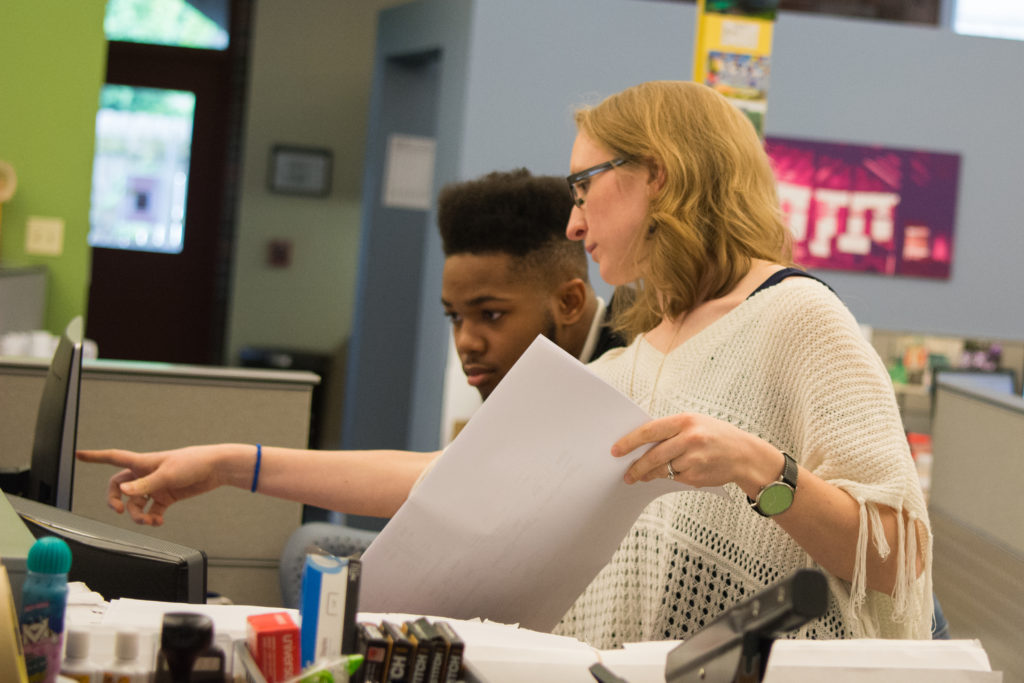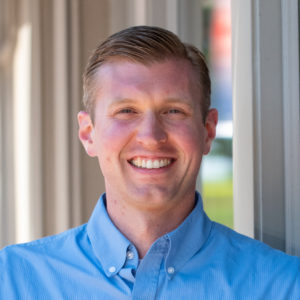Lutheran West's Building Expansion Grand Opening
To develop a holistic academic campus at the Lutheran West facility in Rocky River, the district embarked on an ambitious capital improvement program called “Forward in Faith” to create a facility that enhances the school’s educational offerings. The goal was to build a connected addition to their existing 9-12 school to incorporate grades 6-8 by reorganizing internal spaces and expanding their programming for all students. Featuring an inviting primary entrance, the new two-story, 36,000+ square-foot addition now provides academic, collaborative, and specialized spaces for advanced learning opportunities.
Lutheran West celebrated its Building Expansion Grand Opening on August 4, 2024, with a ribbon cutting ceremony, self-guided tours, and activity stations. Over 500 attendees enjoyed traversing the extended Lutheran West campus, greeted with warm smiles and maps by staff and student volunteers. Families touring the new spaces were invited to extract DNA from strawberries, make audio recordings for playback in the music room, play a fruit keyboard, observe 3D printing in progress, contribute to the prayer mosaic, and test out the state-of-the-art technology in the new video production studio.
Educational Excellence Supported By Donors
As part of the opening comments before the ribbon cutting, Head of School/Principal Joel Bahr welcomed guests, saying, “Lutheran West now prepares and equips students to excel in service, leadership, and learning while our students are living as disciples who are rooted and grounded in the love of Christ. It’s my prayer that you see that this morning as you enter the building. Welcome to Lutheran West.”
“Centers of Excellence” are areas of programmatic expansion brought to life through the Forward in Faith capital campaign. By deepening the student experience, Lutheran West educates and prepares the next generation of Christian thought leaders in growing career fields.
The Lutheran West addition blends the existing structure and new building through a joined courtyard that includes an outdoor classroom, activated by a learning canopy with overhead heating units and outdoor furniture. The campus expansion includes the multi-purpose Longhorn Room, an open student commons, the Richard W. Linn Biology Lab, the expansive John Katt Music Room, and STEM classrooms for science, 3D printing, and robotics courses. The state-of-the-art video and editing studio also utilizes a full-wall green screen for real-time graphics compositing.
Chairman of the Board at the Cleveland Lutheran High School Association, alumnus Greg Steinberg ‘91, gave opening remarks, “We developed a vision, and the vision has been realized today. We’ve expanded the building. We’ve expanded our academics. And we have the best school on the west side of Cleveland. We have faculty and staff committed to helping children grow academically through extracurriculars and learning about the opportunity to get to know Jesus Christ.”
Lutheran West's Building Expansion Grand Opening and Ribbon Cutting
Expanding Educational Growth Opportunities
With construction performed by The Krill Co., the school expansion relocates the Cleveland Lutheran High School Association offices into the new high school space and introduces additional collaborative areas for students and faculty. Accessibility was greatly improved by incorporating an elevator to the second floor. Having all educational resources for students in grades 6-12 secured under one roof completes Lutheran West’s “campus” atmosphere, leaving the door open for future growth opportunities for the building and students.
Lutheran West Self-Guided Tour & Activities
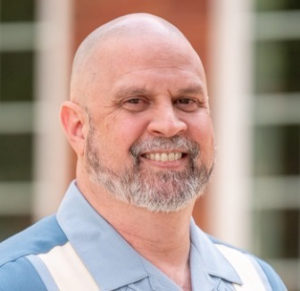
Marc Cebrian
Communications
Get our newsletter with insights, events and tips.
Recent Posts:
Mentor’s CARES House: Autistic Education Comes Home
Perry High School Unveils a State-of-the-Art Welding Lab
ThenDesign Architecture Celebrated its 35th Anniversary
Capital Improvement Plans Work
